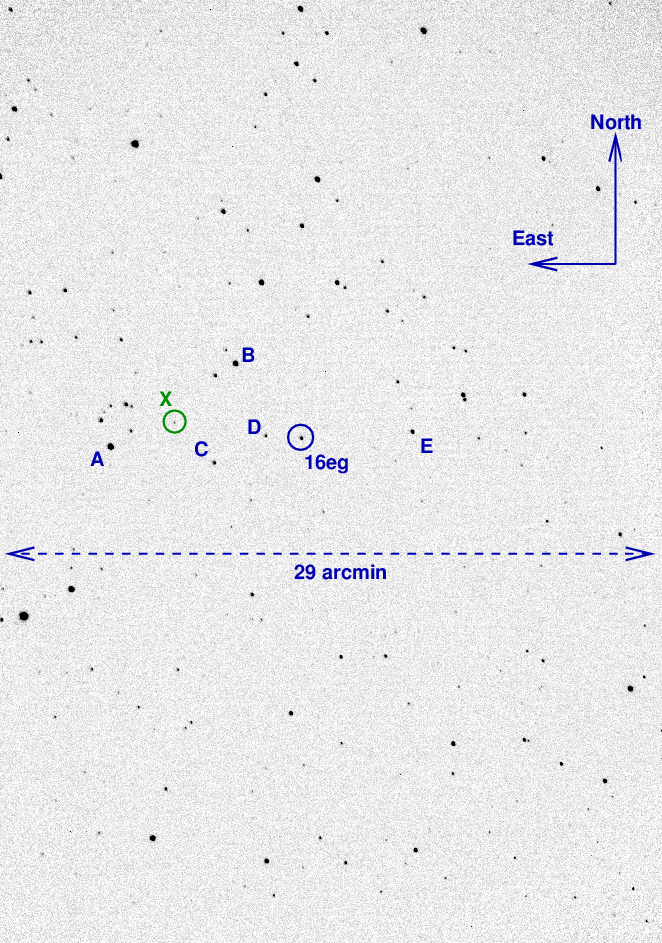
On the night of Apr 19/20, 2016, I acquired a set of observations of the cataclysmic variable star ASASSN-16eg. The variable star showed an average magnitude of about 13.8, so it has faded by about 0.4 mag in the past two nights; but it was slowly rising throughout my observations on this night. The amplitude of its saw-toothed variations is steady at about 0.07 mag.
The main setup was:
This cataclysmic variable star was noticed by the ASASSN search recently.
I have other observations of the object on
The object is located at
RA = 17:26:10.36 Dec = 42:20:02.7
A chart of the field is shown below. The size of the chart is about 44 arcmin tall (North-South) and 29 arcmin wide (East-West). This rather unusual portrait-mode orientation is forced on us if we use the off-axis guider on the new ATIK 11000 camera.
The star labelled "X" is an eclipsing variable known as CSS_J172638.9+422054

Entries for some of the marked comparison stars from the UCAC4 follow:
star UCAC4 B V ---------------------------------------------------- A 662-062549 11.569 10.476 B 662-062523 11.434 10.970 C 662-062528 13.831 13.170 D 662-062515 14.533 13.817 ----------------------------------------------------
I used 30-second exposures with no filter. And -- argh -- I forgot to take 30-second dark frames, so I had to use the master dark from two nights earlier.
Conditions were good, though the waxing gibbous Moon was very bright.
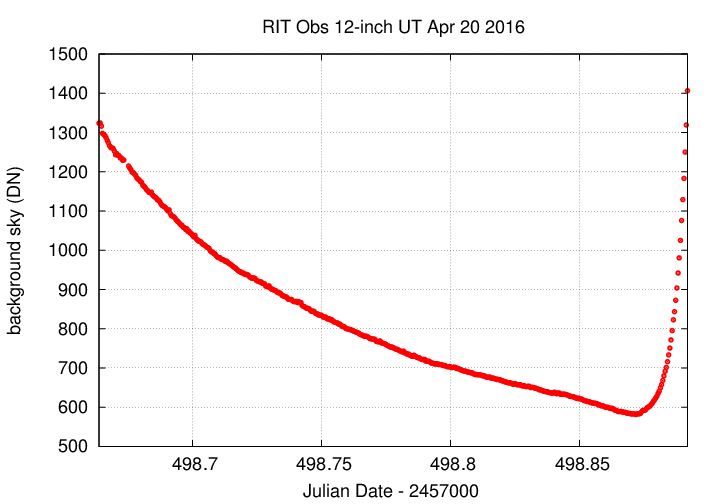
The lack of guider was less important on this night, since I could use a simple mechanism to nudge the telescope a bit when it drifted away from its starting location.
As before, I removed any measurements which were made more than 600 pixels (791 arcsec = 13.2 arcmin) from the center of the field.
Using aperture photometry with a radius of 5 pixels (radius of 6.7 arcsec), I measured the instrumental magnitudes of a number of reference stars and the target. Following the procedures outlined by Kent Honeycutt's article on inhomogeneous ensemble photometry, I used all stars available in each image to define a reference frame, and measured each star against this frame.
Sigma-vs-mag plots show that the floor was about 0.004 mag. ASASSN-16eg is the big outlier at diff mag = 3.2.

Image adjustment factor shows evidence for just very thin clouds, barely visible above the random scatter.
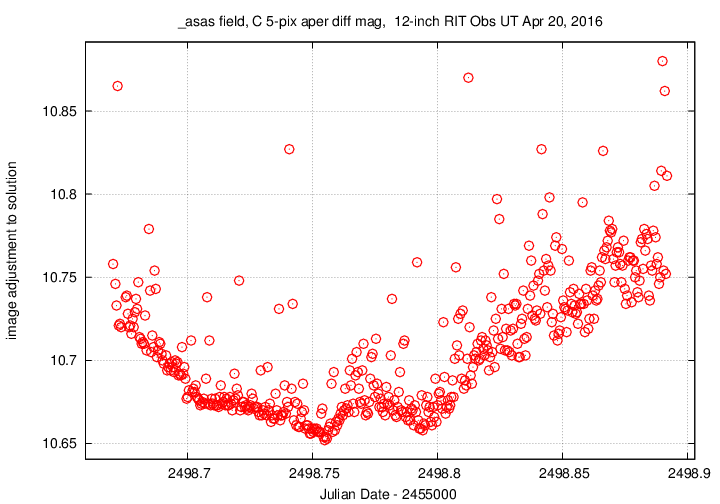
Here are light curves of the variable and the field stars:
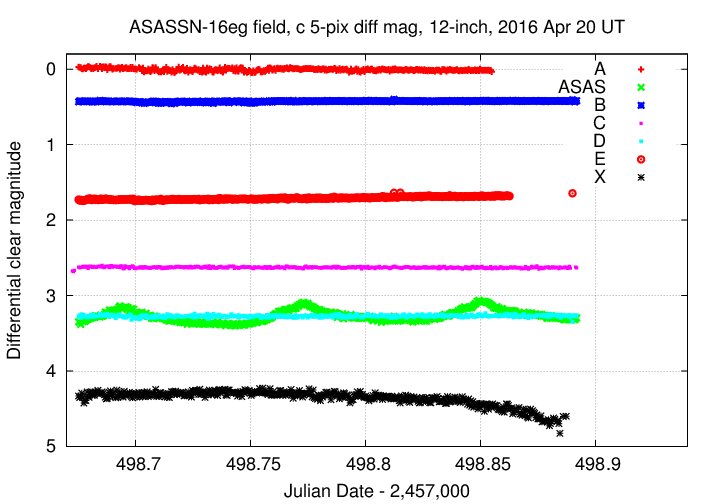
A closeup shows the variations in ASASSN-16eg more clearly.
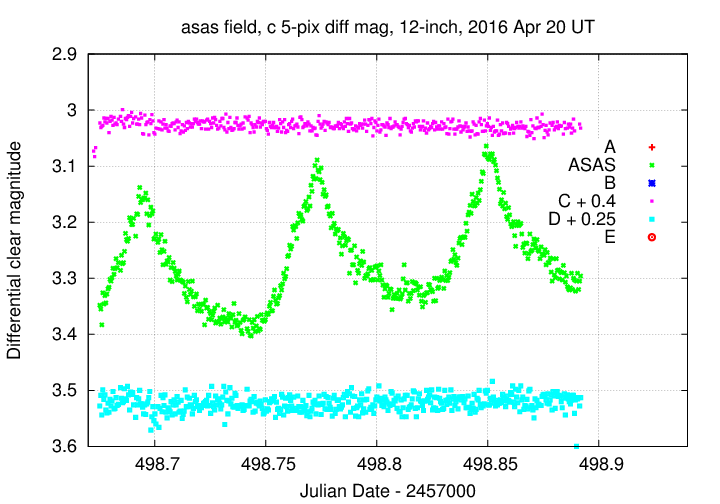
I used the UCAC value for the V-band magnitude of star "C" = UCAC4 662-062528 to shift the ensemble magnitudes to the standard V-band scale -- but remember that these are UNFILTERED measurements.
You can download my measurements below. A copy of the header of the file is shown to explain the format.
# Measurements of ASAS_SN16eg made at RIT Obs, Apr 20, 2016 UT, # in good conditions (but bright moonlight). # by Michael Richmond, using 12-inch Meade and ATIK 11000 CCD. # Exposures 30 seconds long, no filter. # Tabulated times are midexposure (FITS header time - half exposure length) # and accurate only to +/- 1 second (??). # 'mag' is a differential magnitude based on ensemble photometry # using a circular aperture of radius 6.6 arcseconds. # which has been shifted so UCAC4 662-062528 has mag=13.170 # which is its V-band mag according to UCAC4. # # UT_day JD HJD mag uncert Apr20.17522 2457498.67522 2457498.67694 13.890 0.018 Apr20.17567 2457498.67567 2457498.67739 13.897 0.019 Apr20.17613 2457498.67613 2457498.67785 13.925 0.018
Last modified 4/20/2016 by MWR.